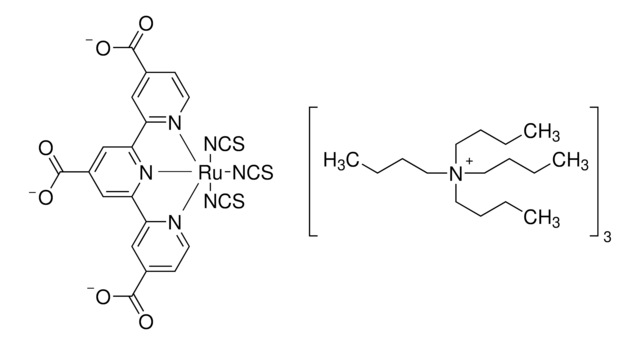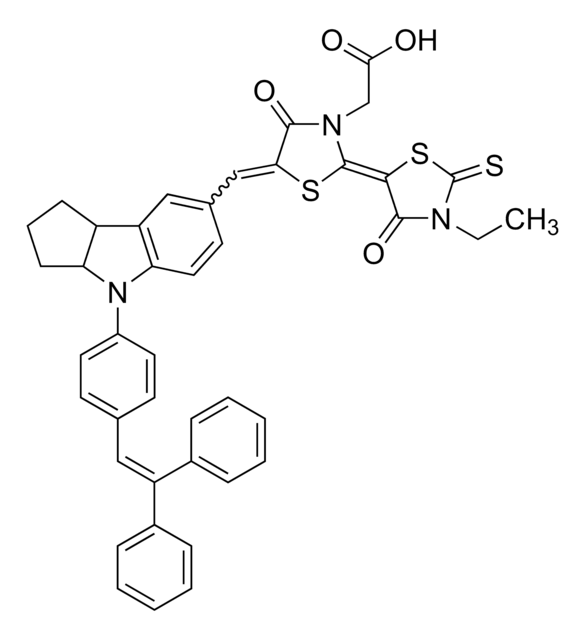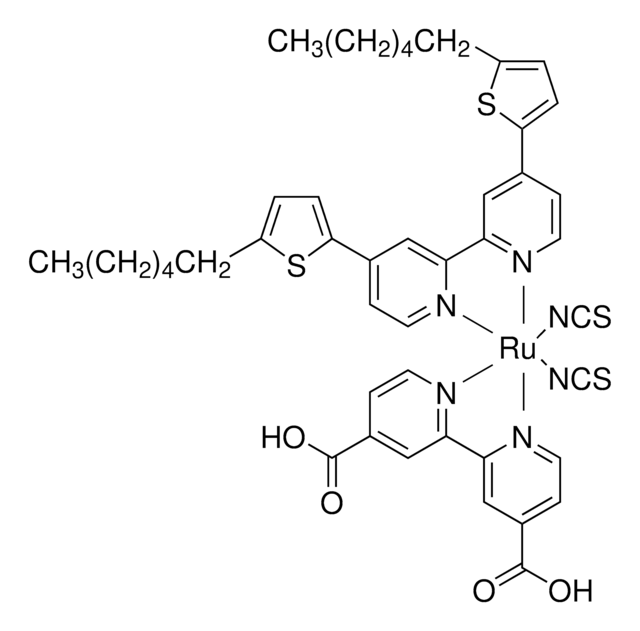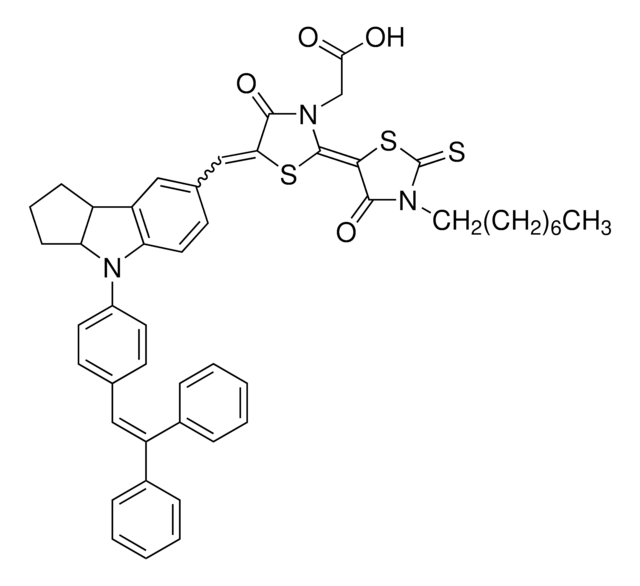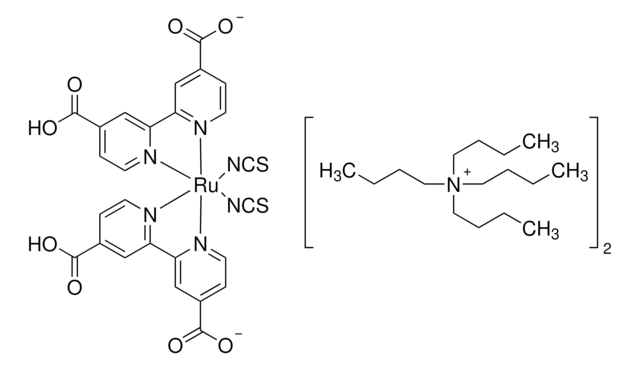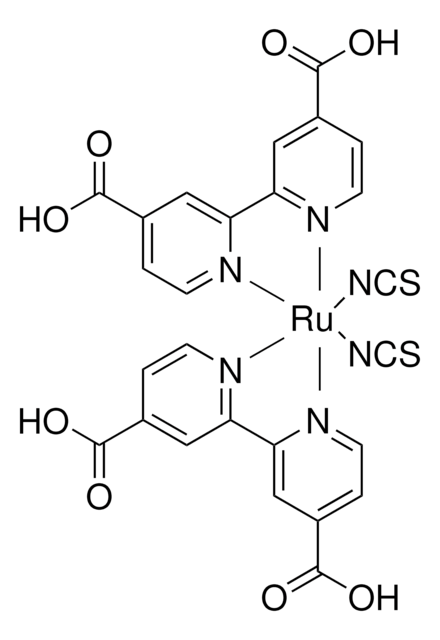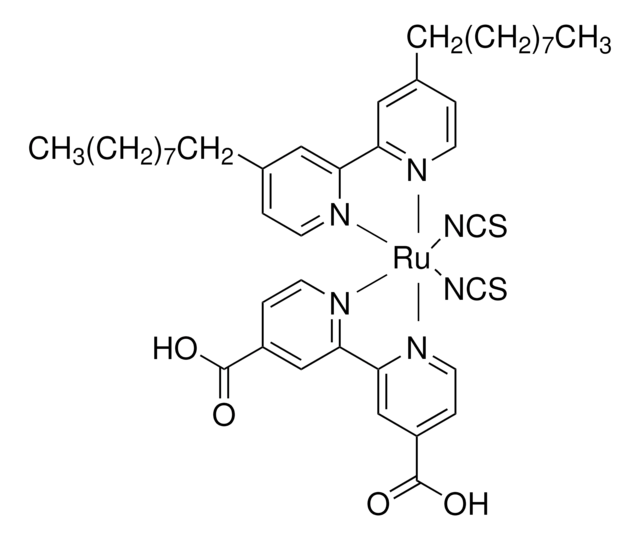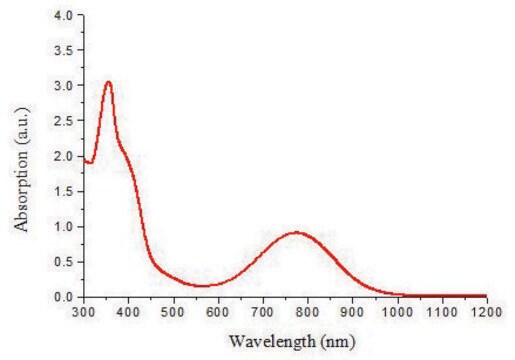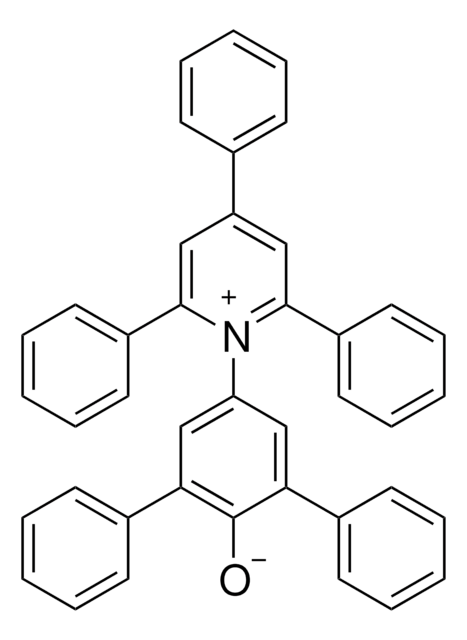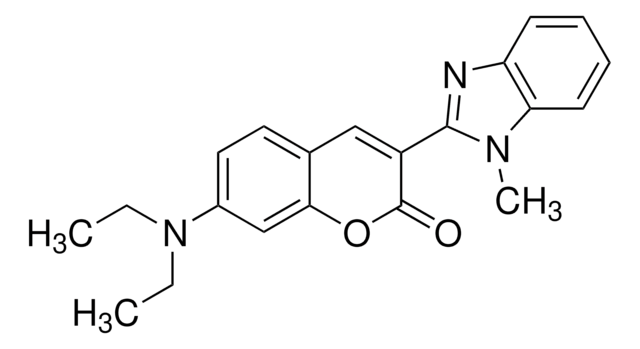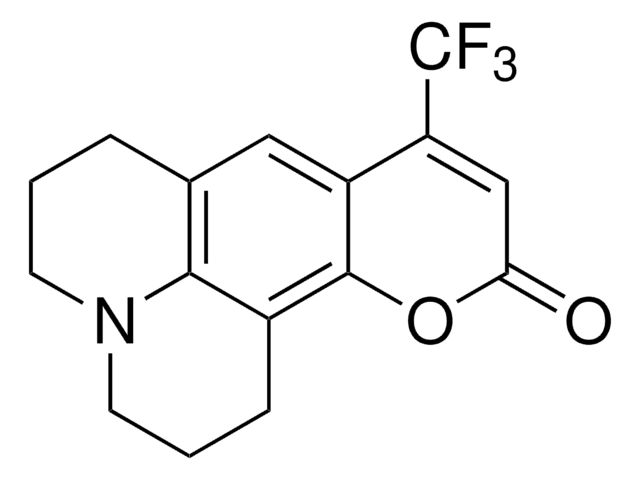745944
D102 Dye
95% (HPLC)
About This Item
Prodotti consigliati
Livello qualitativo
Saggio
95% (HPLC)
Stato
powder
Punto di fusione
238-243 °C
λmax
499 nm in DMF
Stringa SMILE
S=C(S/C1=C\C(C=C2)=CC3=C2N(C4=CC=C(C=C(C5=CC=CC=C5)C6=CC=CC=C6)C=C4)C7C3CCC7)N(CC(O)=O)C1=O
InChI
1S/C37H30N2O3S2/c40-35(41)23-38-36(42)34(44-37(38)43)22-25-16-19-33-31(21-25)29-12-7-13-32(29)39(33)28-17-14-24(15-18-28)20-30(26-8-3-1-4-9-26)27-10-5-2-6-11-27/h1-6,8-11,14-22,29,32H,7,12-13,23H2,(H,40,41)/b34-22-
XGMCROHUTRXETK-VQNDASPWSA-N
Categorie correlate
Descrizione generale
Applicazioni
Cell area: 0.25 cm2 (0.5 cm × 0.5 cm)
TiO2 Thickness: 5 μm
TiO2: screen printing
Electrolyte: 0.1 M LiI; 0.05 M I2; 0.6 M Dimethyl propylimidazolium
Iodide; 0.05 M t-Butylpyridine in 3-Methoxypropionitrile
Light source: AM1.5
Counter Electrode: Pt/Cr spatter glass
Dye adsorption: 30 °C/ in 3 hr. (t-BuOH/acetonitrile soln.)
Note legali
Scegli una delle versioni più recenti:
Certificati d'analisi (COA)
Non trovi la versione di tuo interesse?
Se hai bisogno di una versione specifica, puoi cercare il certificato tramite il numero di lotto.
Possiedi già questo prodotto?
I documenti relativi ai prodotti acquistati recentemente sono disponibili nell’Archivio dei documenti.
I clienti hanno visto anche
Articoli
Dye-sensitized solar cells (DSCs) are 3rd generation solar cells combining the promise of high efficiency with low production costs.
While dye sensitization as the basis for color photography has been accepted for a very long time,1 attempts to use this principle for the conversion of solar light to electricity generally had resulted only in very low photocurrents, below 100 nA/cm2.2
Il team dei nostri ricercatori vanta grande esperienza in tutte le aree della ricerca quali Life Science, scienza dei materiali, sintesi chimica, cromatografia, discipline analitiche, ecc..
Contatta l'Assistenza Tecnica.